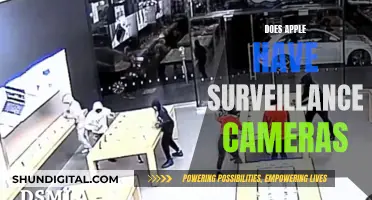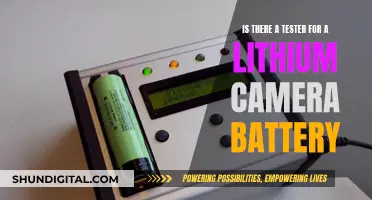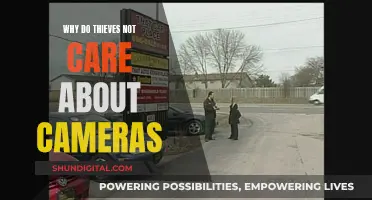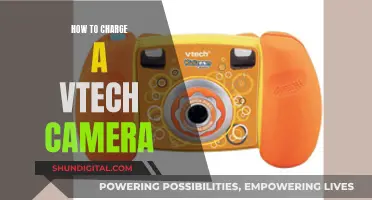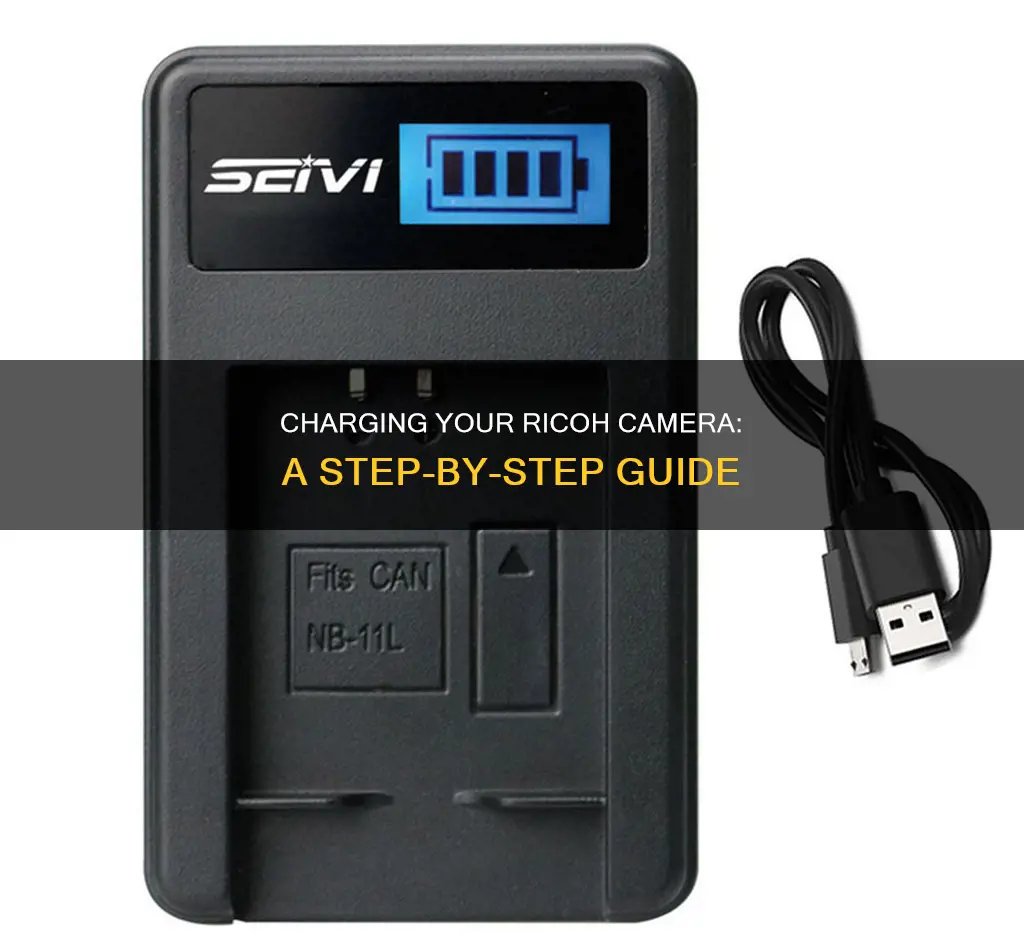
Charging your Ricoh camera is a straightforward process, but there are some important tips to keep in mind to ensure the safety of your device and maintain optimal performance. In this guide, we will cover the steps for charging your Ricoh camera, including connecting to a power source, choosing the correct charging settings, and best practices for battery care. We will also address some common questions and troubleshooting tips related to charging your Ricoh camera.
What You'll Learn

Charging Ricoh GR III via USB-C
To charge your Ricoh GR III camera via USB-C, you can use any compliant USB-C type charger. This includes your MacBook Pro or MacBook Charger, or a third-party USB-C charger.
USB-C chargers will ask the device how much power it can handle (voltage and ampere). After a successful negotiation, the charger will adjust its power output. If the device does not support this power delivery protocol, the charger will default to an output of 5V and let the device handle the charging.
It is important to use compliant USB-C chargers and cables. A cheap, non-compliant cable can damage the device.
To open the door covering the USB-C port, use your fingernail to dig into the cavity sideways and then lift the cover gently towards you.
SpyPoint Camera Plans: What's the Cost of Each Camera?
You may want to see also

Charging Ricoh GR III with a MacBook charger
The Ricoh GR III camera can be charged using a MacBook charger, but there are some important points to note.
Firstly, the Ricoh GR III uses a USB-C port for charging, which is a standard and widely available connection. This means that you can use any compliant USB-C type charger to charge the camera. This includes the MacBook Pro charger (61W) and the 29W USB-C Power Adapter, which have both been used successfully to charge the GR III via its USB-C port.
When using a USB-C charger, it will ask the device how much power it can handle (voltage and ampere). The charger will then adjust its power output accordingly. If the device does not support this power delivery protocol, the charger will default to an output of 5V, and the device will handle the charging from there. This is likely how the Ricoh GR III works, as it does not use any kind of fast charging.
It is important to use compliant USB-C chargers and cables to avoid damaging your device. A cheap, non-compliant cable could damage the camera.
Additionally, when charging the camera, it is recommended to keep it within a certain temperature range. According to Ricoh, the ideal charging temperature for the DB-100 battery is between 10 °C and 40 °C. Charging times may increase if the temperature is between 10 °C and 15 °C, and at temperatures below 10 °C, the battery may not charge at all.
Finally, while charging, do not leave the camera in direct sunlight or subject it to extreme temperatures, strong shocks, or vibration.
Charging the Heimvision Camera: A Step-by-Step Guide
You may want to see also

Charging Ricoh GR III with a mobile phone charger
The Ricoh GR III camera can be charged using any compliant USB-C type charger. This means that you can use a mobile phone charger to charge your camera, as long as the cable is USB-C compatible.
When you connect a USB-C charger to your camera, the charger will ask the camera how much power it can handle. After a successful negotiation, the charger will adjust its power output. If the camera does not support this power delivery protocol, the charger will default to an output of 5V and the camera will handle the charging from there.
It is important to use compliant USB-C chargers and cables. A cheap, non-compliant cable could damage your camera.
To charge your Ricoh GR III camera using a mobile phone charger, follow these steps:
- Plug the USB-C end of your cable into your camera.
- Plug the other end of your cable into your mobile phone charger.
- Plug your mobile phone charger into a power outlet.
- Check that your camera is charging. The indicator lamp on the camera will light up in red when charging.
- Allow your camera to charge completely. This may take up to 240 minutes, depending on the temperature and the current charge state.
- Once charging is complete, the indicator lamp will turn off. You can now unplug your camera from the charger.
Charging Camera Batteries: DIY Home Hacks
You may want to see also

Charging Ricoh GR III in-camera
The Ricoh GR III is a premium compact camera with a 24-megapixel APS-C sensor and a 28mm fixed focal length lens. The camera supports in-camera charging via its USB Type-C port.
To charge the Ricoh GR III in-camera, follow these steps:
- Connect the camera to a power source: You can use the supplied charger or connect the camera to a computer or laptop via the USB Type-C cable.
- Put the battery in the camera: Ensure that the battery is properly inserted into the camera.
- Select the correct USB connection option: When you connect the camera to a computer, you will see options for USB connections on the screen. Choose the "Charge" option and press the MENU/OK button to start charging.
- Monitor the charging status: The indicator lamp on the camera will blink about once a second during USB charging. It will blink rapidly (about twice a second) for 5 seconds and then turn off if there is a charging error or no battery is inserted.
- Charging time: The charging time may vary, but it typically takes around 240 minutes to fully charge the battery when connected to a computer.
- Important notes: Do not leave the camera in direct sunlight or subject it to extreme temperatures during charging. Always disconnect the cable when charging is complete to avoid any potential fire hazards.
By following these steps, you can conveniently charge your Ricoh GR III camera in-camera, ensuring that it's ready for your next photography adventure.
Charging the Eufy 2C: A Quick Guide to Powering Up
You may want to see also

Charging Ricoh camera with a USB cable
To charge your Ricoh camera with a USB cable, follow these steps:
First, put the battery in your camera. Then, using the supplied USB cable, connect your camera to a USB port on your computer. When you connect your camera to your computer, you will see options for USB connections on the screen. Choose the "Charge" option and press the MENU/OK button to start charging.
Please note that charging will not begin if another option is selected. The indicator lamp on your camera will show the charging status. If it blinks about once a second, it means USB charging is in progress. If it blinks rapidly (about twice a second) for 5 seconds and then turns off, it indicates a charging error or no battery insertion.
It takes approximately 240 minutes to charge your Ricoh camera when connected to a computer and around 160 minutes when connected to a power outlet. The charging time may vary depending on the temperature, current charge state, and operations performed with the camera and/or computer.
Some important notes to keep in mind:
- Charging will start automatically if no operations are performed for over 30 seconds after connecting the camera to the computer.
- The battery will not charge if the computer is turned off or in sleep mode.
- If the battery has been left unused in the camera for an extended period, there may be a delay before USB options are displayed or charging begins. In such cases, it is recommended to charge the battery using a power outlet and a power adapter.
- Use only the supplied power adapter and USB cable.
- Do not subject the camera to strong impacts, direct sunlight, extreme temperatures, strong shocks, or vibration during charging.
- Always disconnect the cable when charging is complete to prevent the risk of fire.
- Do not touch the contacts of the rechargeable battery with metal objects, as this could short the battery.
- Charge the battery at temperatures between 10°C and 40°C. Charging times may increase at lower temperatures, and the battery may not charge at all if the temperature is below 10°C.
- Connect the USB cable directly to a USB port on your computer, not through a USB hub.
- Data cannot be written to the memory card in the camera during charging.
- Accessing the camera during charging may increase the charging time.
- Pressing the power button while charging will stop the charging process and turn off the camera.
Charging the Kodak EasyShare Z650: A Step-by-Step Guide
You may want to see also
Frequently asked questions
You can charge your Ricoh camera by connecting it to a power outlet or your computer's USB port using the supplied USB cable.
Charging a Ricoh camera takes approximately 240 minutes at 25°C. However, the charging time may vary depending on factors such as temperature, current charge state, and operations performed with the camera.
Yes, you can use any compliant USB-C type charger to charge your Ricoh camera. However, ensure that you use compliant USB-C chargers and cables to avoid damaging your device.


